Table of Contents Show
Whether you remember watching her on screen for the first time in her breakout roles in films like Misery (1990; Rob Reiner) or are retroactively realizing just how many beloved films she has been a crucial part of throughout her extensive acting career, it is more than likely that you have at least heard of Kathy Bates and her impressive prowess as an actress.
‘Kathleen Doyle Bates,’ Also Known As Kathy Bates (1963–present)
In an age when young, conventionally attractive actors tend to dominate Hollywood, Kathy Bates (along with countless other “ordinary” looking actors) began to challenge this notion in a way that made aesthetically oriented casting directors question whether an actor’s appearance should be prioritized over their talent. Perhaps one of the greatest struggles that Kathy Bates has faced throughout her extensive acting career further speaks to this dilemma; rather than recognizing her for the talented actress she is, countless casting directors have relegated Bates to type-casted roles that have limited the star’s great potential.
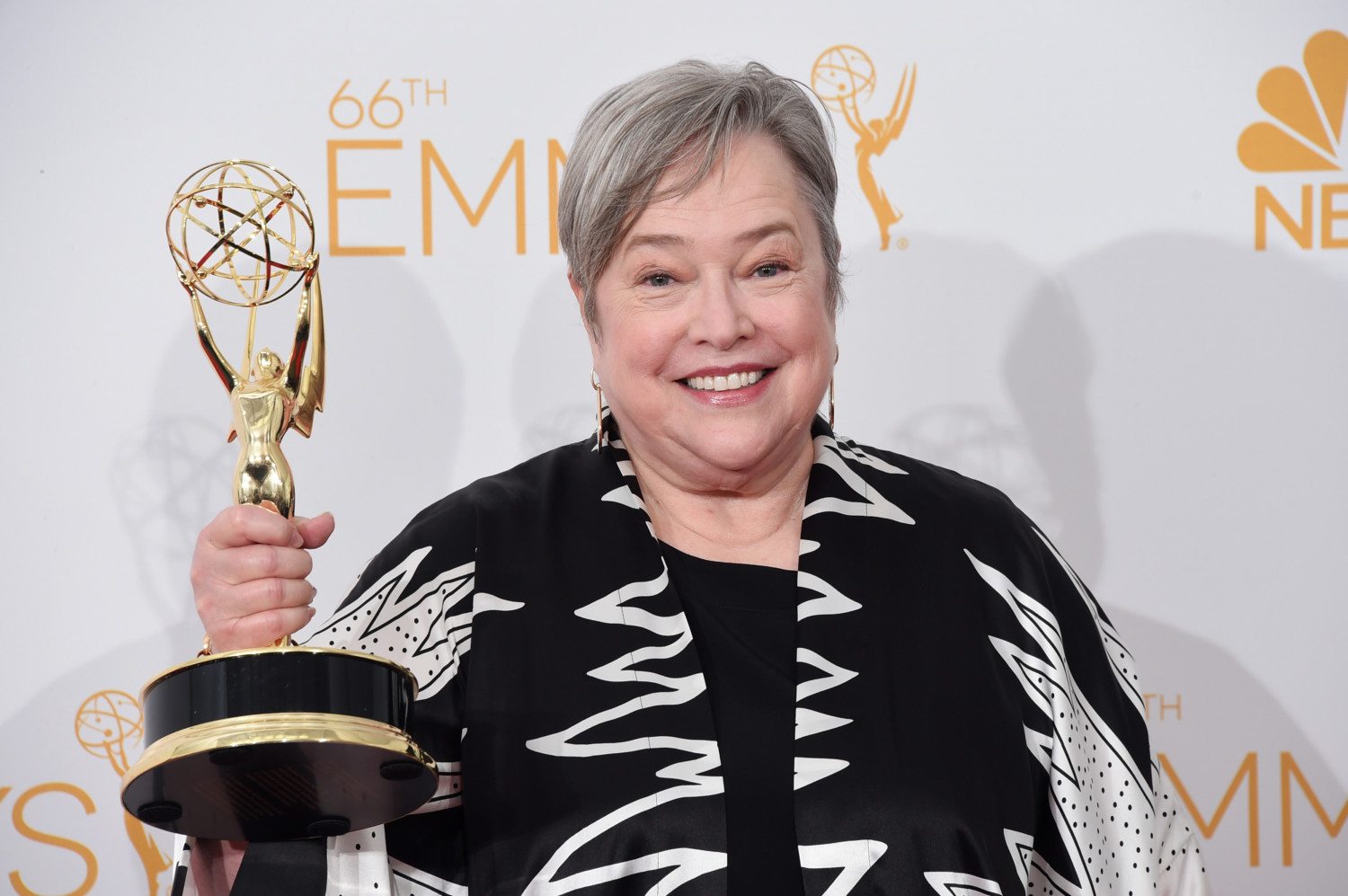
In an interview with The New York Times, Bates commented on how several casting directors have openly told her that she wasn’t attractive enough to be a successful actress. (( David Sacks, “‘I Was Never an Ingenue,’” The New York Times, January 27, 1991. )) These same casting directors are likely regretting these comments now that Bates has more than proved her skill as an actress, receiving countless awards, including an Academy Award, two Emmys, two Golden Globes, and a star on the Hollywood Walk of Fame. (( “Kathy Bates: Awards,” IMDb. )) In an effort to continue honoring Kathy Bates as an award-winning actress, here is a list of roles that have undoubtedly proven these discriminatory casting directors wrong.
Annie Wilkes From Misery (1990)
Often considered as her breakout role, Kathy Bates’ portrayal of psychotic superfan Annie Wilkes revolutionized how crazed killers could be portrayed on film in a way that initially masked their madness. By lulling the viewer into a false sense of ease in convincing them that her character is only a socially awkward recluse, the viewer is shocked back into author Paul Sheldon’s cruel reality when the woman, who claims to be his number one fan, immobilizes him with a sledgehammer. Now bedridden and dependent on drugs to ease his suffering, Sheldon is forced to rewrite the conclusion of his least favorite character he has ever created, Misery Chastain, to Wilkes’ satisfaction.
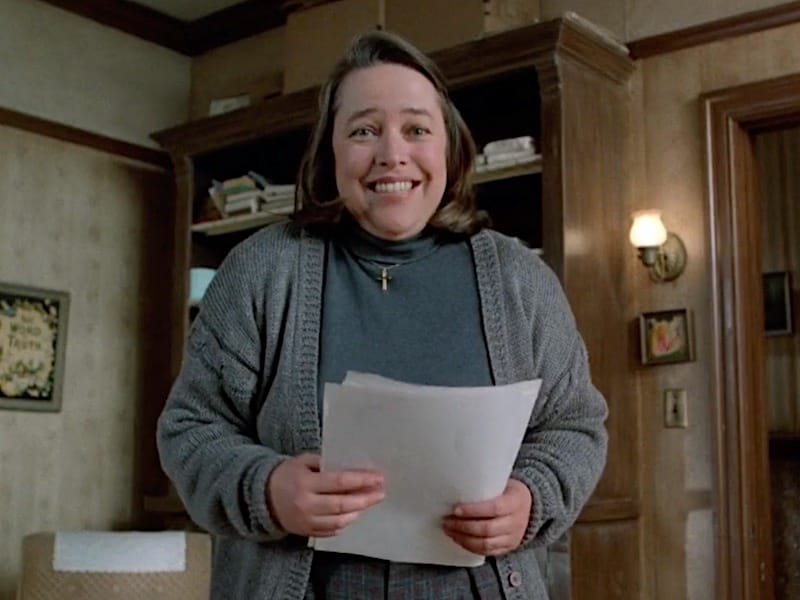
Any warmness previously contained in Bates’ smile quickly dissipates as Wilkes continues to torture Sheldon. This condition worsens after she discovers that Sheldon had ventured outside of the small room he had been imprisoned within and found her murder scrapbook of sorts. This fleeting warmness becomes practically nonexistent as Sheldon realizes that Wilkes never had any intention of taking him to a real hospital after she realized just how lucky she was that the man she had rescued from a car wreck was none other than her favorite author of all time. The claim that the book is always better than the movie is one that has rarely been disproven, Kathy Bates’ impactful performance in Misery questions this notion.
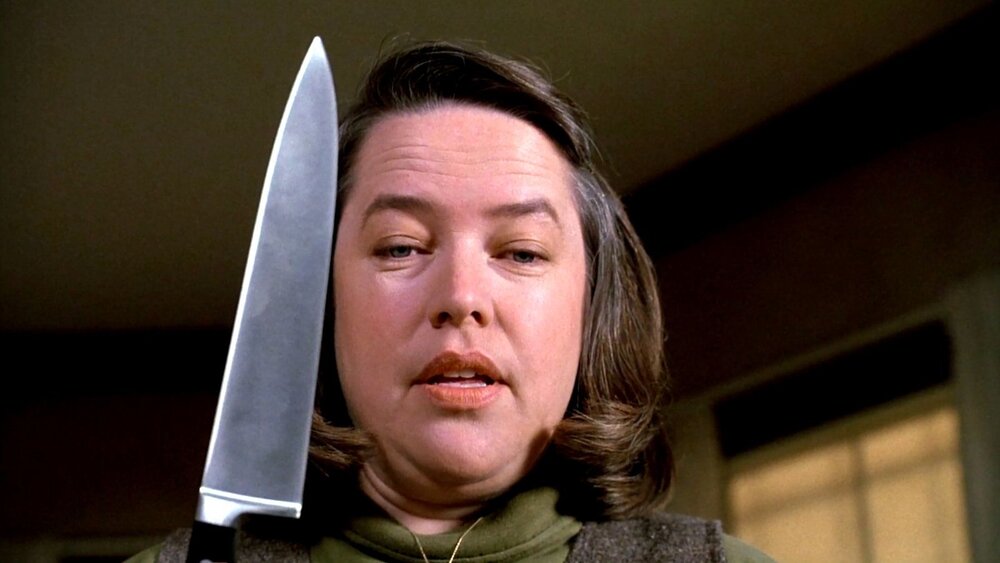
For horror fans who are more squeamish, sitting through an entire Stephen King novel may be too much — personally speaking, there were certain sections that I had to skim through in order to get through Misery (1987). The film adaptation provides a more palatable, equally entertaining alternative to the abundance of gore present in the novel; for instance, while Wilkes solely breaks Sheldon’s ankles in the film to immobilize him, the crazed superfan goes much further in the novel, using an ax to cut off one of Sheldon’s feet. Nevertheless, Bates’ haunting portrayal of Wilkes in Misery cements the film’s iconic imagery into the minds of many horror fans. It has helped to make the film adaptation an unforgettable classic.
Dolores Claiborne From Dolores Claiborne (1995)
Soon after the astronomical success of Misery‘s film adaptation, fans of Stephen King and Kathy Bates were delighted to see Bates portray yet another of King’s characters, Dolores Claiborne. Dolores is no stranger to adversity, having to endure domestic abuse from her husband at home and emotional abuse from her domineering employer at work. The horror contained within Dolores’ life is readily apparent to any viewer: her daughter (Selena) is blinded by the paternal bond she shares with her mother’s abuser, and the only other pillar in Dolores’ life — her employer — berates her whenever she makes even the smallest mistake.
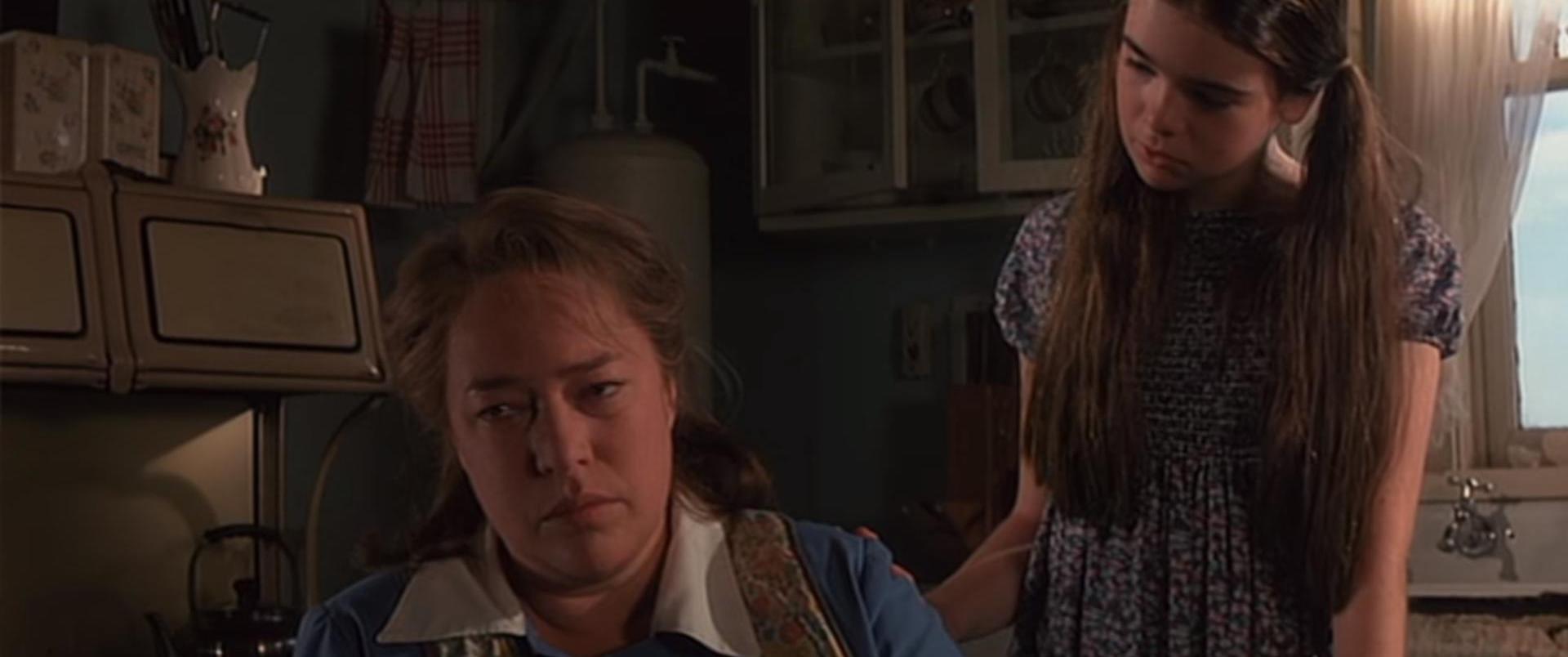
Although Dolores quickly musters up enough courage to defend herself against her abusive husband (Joe St. George), the horror of her situation only intensifies as Joe begins to relieve his aggressions by sexually harassing his own daughter. While Selena could have confided in her mother, she becomes afraid of Dolores after witnessing her threaten Joe with a hatchet. Unfortunately, this violent exchange drastically alters how Selena views her mother and ends up scarring her for life. Too afraid of her own mother, Selena keeps this abuse to herself until Dolores confronts her daughter, who has become a desolate shell of her former self. Within the film adaptation, Kathy Bates brings this scene to life with a certain ease that simultaneously endears the viewer to Dolores as a strong, badass woman and practically ensures that Joe will be punished for his atrocity sooner rather than later.
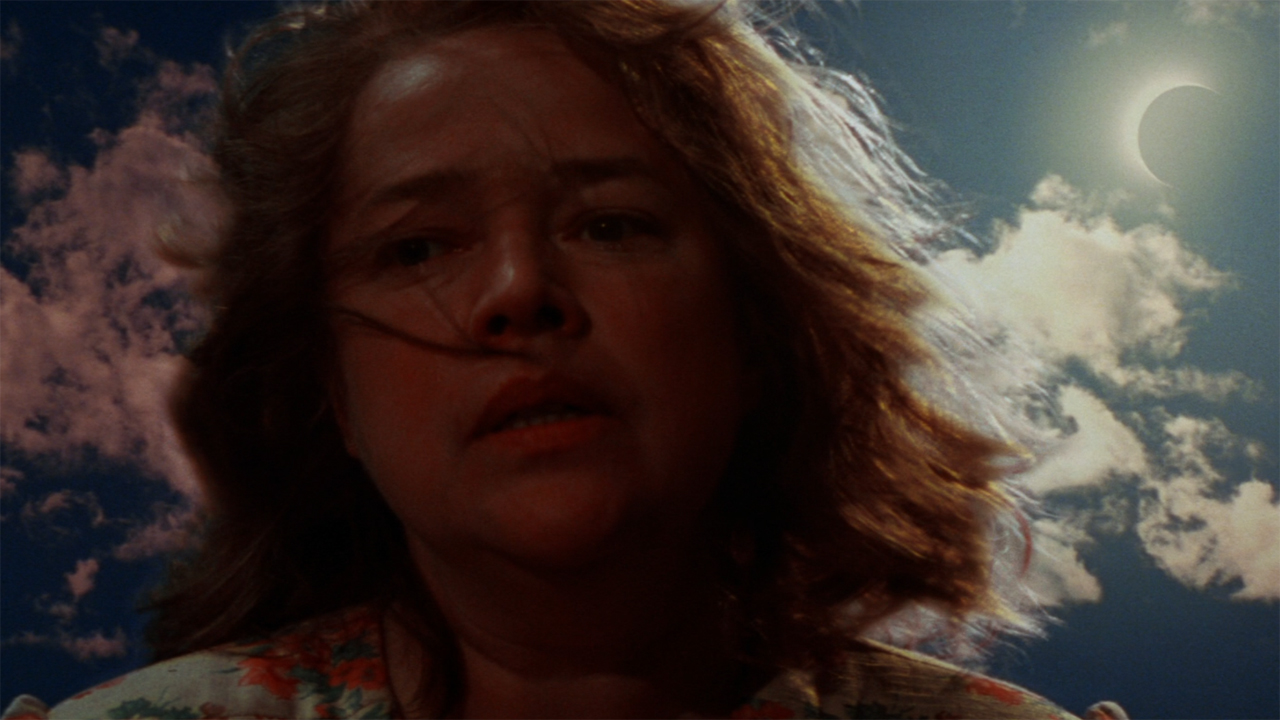
The struggle between Dolores and her husband Joe culminates as the entire populace of Little Tall Island, Maine, celebrates the total solar eclipse. While the day begins cheerfully so Dolores can later catch a drunken Joe off guard while exacting her revenge, it takes an intense turn when Dolores confronts him about abusing Selena. Enraged, Joe begins to chase Dolores and drunkenly follows her into the clearing behind their home. Just as planned, Joe walks over the opening of an old well that Dolores had intentionally concealed earlier that day and falls to his demise.
Even though this should have been a triumphant moment for Bates’ character, Dolores maintains a certain wary skepticism that gives her character a nuanced depth and realism. After all, there are still plenty of loose ends for Dolores to tie up. Now that the poison formerly known as Joe St. George is finally out of her life, Dolores must convince her children that the man they had held to such high regard had fallen because of an unfortunate accident since they would never be able to look at their mother in the same way if they knew that she was responsible for his death.
Madame Delphine LaLaurie From American Horror Story: Coven (2013-14)
It is often said that Kathy Bates thrives within roles of villainy as an actress, and her portrayal of the nefarious 1830s serial killer Delphine LaLaurie in American Horror Story: Coven is no exception. (( Patrick Thornton, “Kathy Bates Is Awesome In Everything, And Most People Don’t Even Realize It,” Ranker, November 10, 2020. )) While many villains are tinged with an endearing trait that makes them more likable and interesting as characters, the blatant racism and terror of Delphine’s crimes make it easy for viewers to root against her. In fact, American Horror Story: Coven opens with Delphine indifferently torturing her slaves before using their blood as a sick, “rejuvenating” skin treatment of sorts.
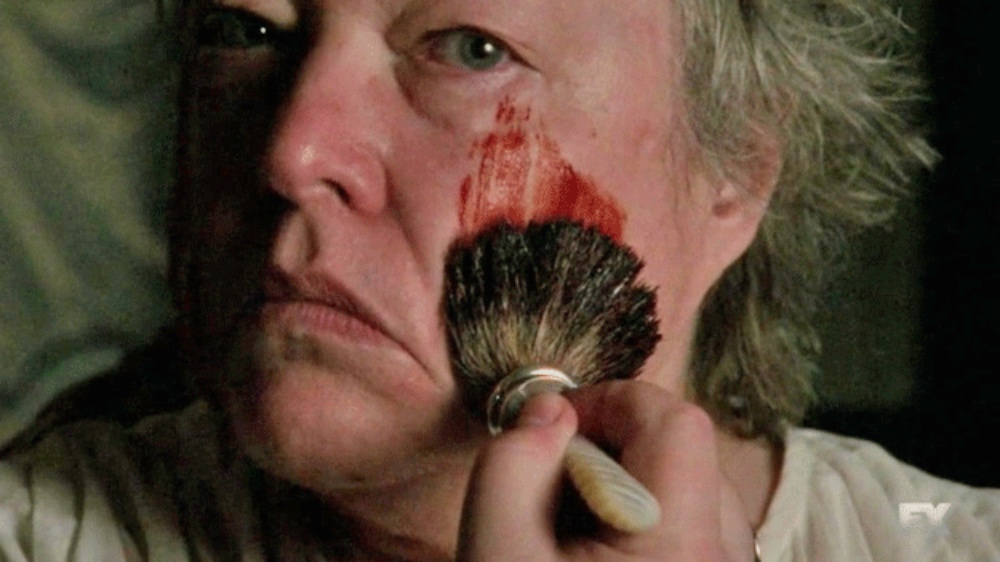
The wealthy socialite turned malicious serial killer stands out even more throughout the anthology series after she is retrieved from her eternal burial over 150 years later by the Salem Coven’s Supreme witch Fiona Goode, who seeks guidance from Bates’ character regarding the secret of eternal life. However, while Fiona covets Delphine’s immortality, Delphine vindictively receives this immortality from her arch-nemesis Marie Laveau, who buried her alive soon after to make Delphine confront how horrible of a person she truly is and exact vengeance for her murdered lover in the process.
The anguish that the Supreme ensures that the former socialite endure is incredibly satisfying to watch unfold. Perhaps the most satisfying punishment inflicted on Delphine is her new role as a Black witch’s chambermaid, being tasked to cater to her every whim despite coming from a time when being a white slaveowner was desirable and respectable. While the Coven’s Supreme cherishes Delphine’s knowledge of immortality, this does not stop Fiona from rightfully continuing to punish Delphine for her heinous crimes. For anyone less familiar with American Horror Story and this specific role, the clip above encapsulates the peaks and valleys that Bates is able to attain with a masterful grace as well as the delectable satisfaction that results from the bigoted, former 19th-century socialite receiving a taste of her own medicine.
Ethel Darling From American Horror Story: Freak Show (2014-15)
Perhaps the perfect example of Kathy Bates’ ability to imbue an endearing, fully realized persona into a character who may be more off-putting on a surface level is Ethel Darling, a loving mother and hard-working woman. She just so happens to be employed in a freak show as a bearded lady. In many ways, the story of Ethel Darling functions as a parallel to Bates’ own: belittled and made to feel less than throughout her life due to her unconventional appearances, Ethel comes into her own while on stage and proves her naysayers wrong as she showcases her unadulterated star power. In addition to being a woman who refuses to remain silent when others attempt to put her down, Ethel serves as a matriarchal figure to everyone employed at the freak show and is often regarded as the glue holding the band of misfits together as they endure hardship after hardship.
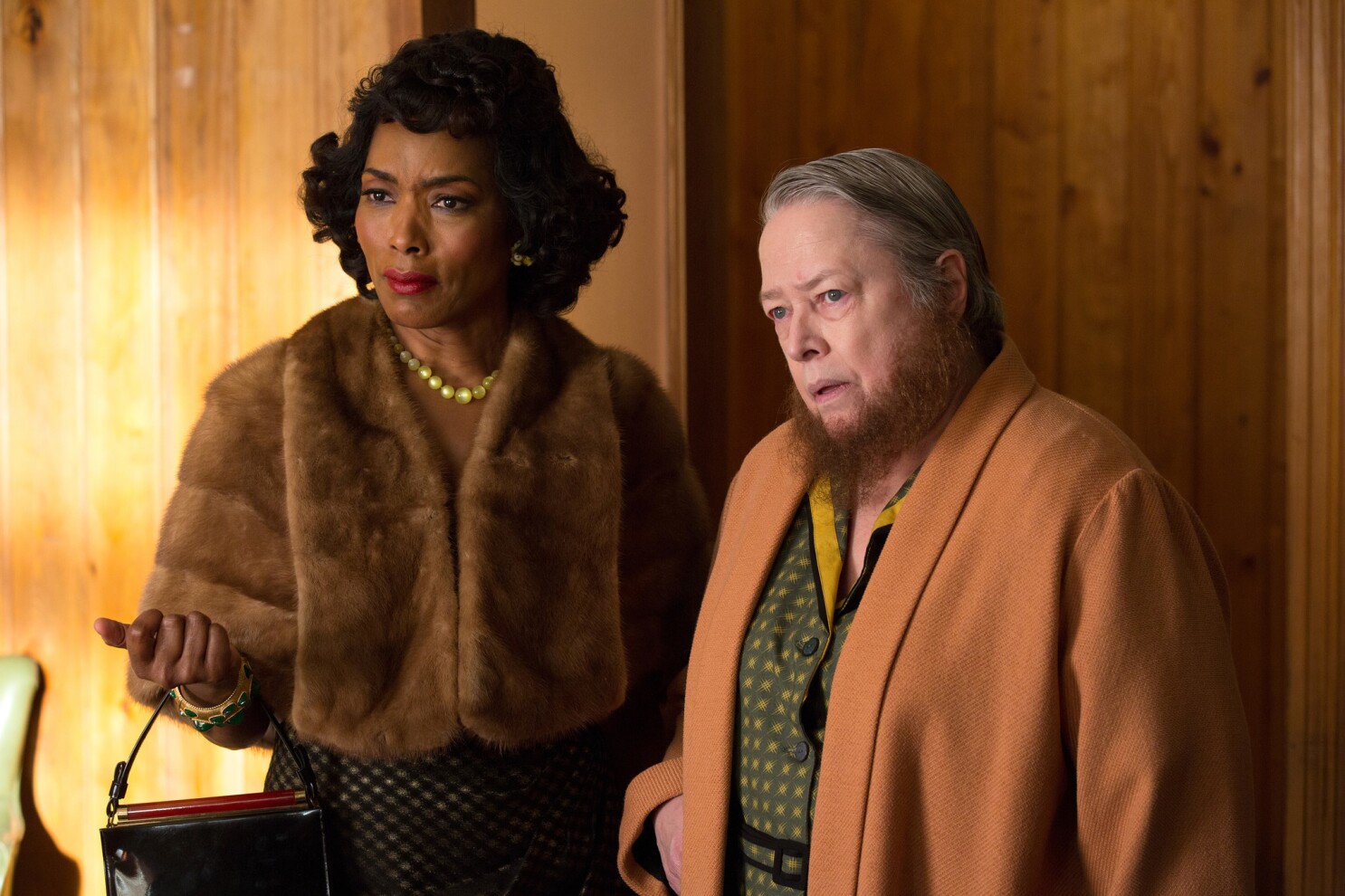
Out of the previous roles listed, Kathy Bates’ portrayal of Ethel Darling is arguably the most captivating and is inspirational to viewers in many ways. Throughout this season of the anthology series, Ethel, in particular, combats how others view her and is forced to come to terms with how being othered throughout her life has negatively impacted how she views herself and the world around her. In an impactful scene during the season’s third episode, Ethel opens up to her physician and shares just how grateful she is to have a “normal” person in her life who can look past her beard and become friends with her for the kind-hearted person she is. Throughout the scene, Bates is once again able to evoke emotions that are sure to bring the viewer to tears with masterful ease while opening up about something that many viewers can relate to.
“You know what, doc? I ain’t crying because you told me I’m going to die. I’m crying because you’re the first doctor ever to treat me with respect. I just can’t help thinking my whole life may have gone different[ly] if I’d met you sooner.”
Ethel Darling, American Horror Story: Freak Show (( “Edward Mordrake: Part 1.” American Horror Story: Freak Show. 2014-15. FX Networks. ))
Kathy Bates’ Undeniable Skill
While a few of Kathy Bates’ more impactful roles may appear to be similar to one another on the surface, Bates’ natural skill as a performer allows her to breathe new life into previously contrived roles and bring a twisted likability to antagonistic characters like Annie Wilkes and Delphine LaLaurie. On the other hand, Bates similarly endears viewers to strong-willed maternal characters like Dolores Claiborne and Ethel Darling. They live their lives as outcasts and are forced to do the unthinkable in order to protect their own. These maternal roles also force the viewer to confront these characters’ cruel realities and challenge their own perception of the world around them.
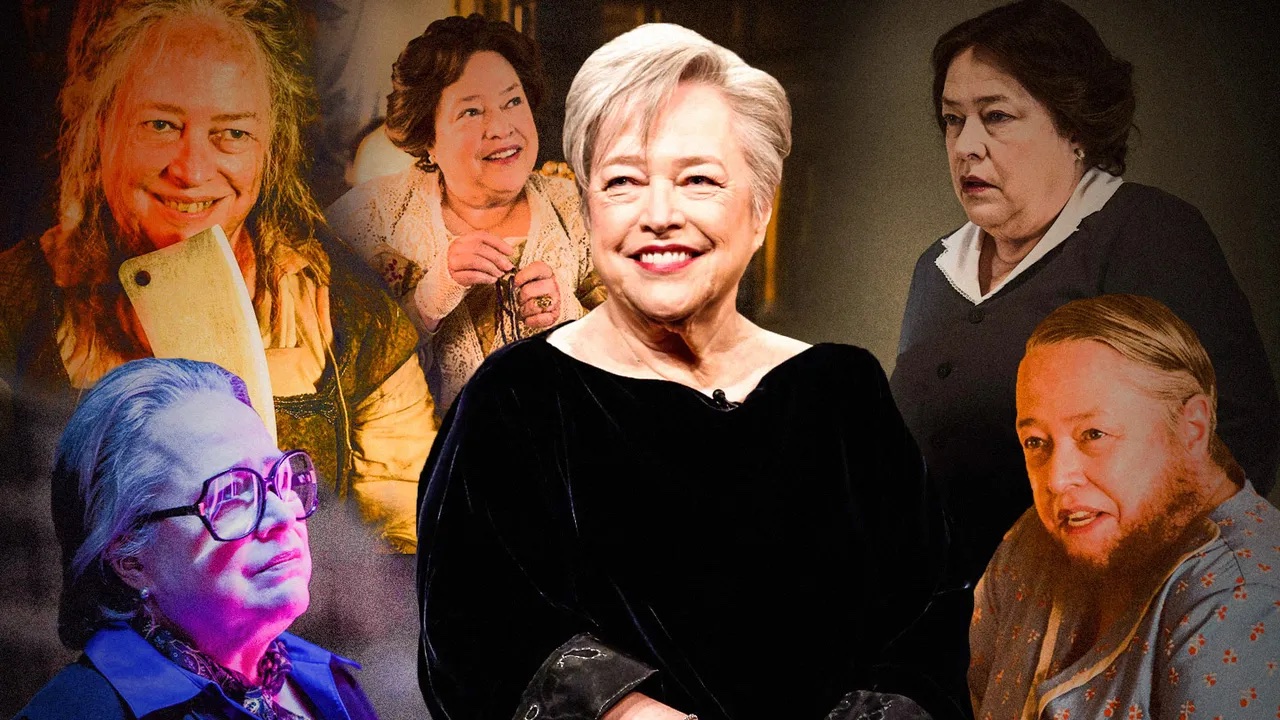
After all, can a society that ostracizes women who are forced to protect themselves against abusive husbands and women who don’t conform to conventional beauty standards be left unchallenged? One of the most critical takeaways in considering Kathy Bates’ significant impact within the world of acting is how she has actively challenged the prioritization of an actor’s looks over any consideration of their talent. Rather than casting someone who fulfills a particular character type, Bates has helped bring awareness to this practice’s archaic nature and hold shallow-minded casting directors accountable. While it is indisputable that it has been a true joy to watch Bates evolve as an actress, the apparent impact she has had on ensuring that more diverse, talented individuals excel within an industry that has been traditionally appearance oriented cannot be overlooked.
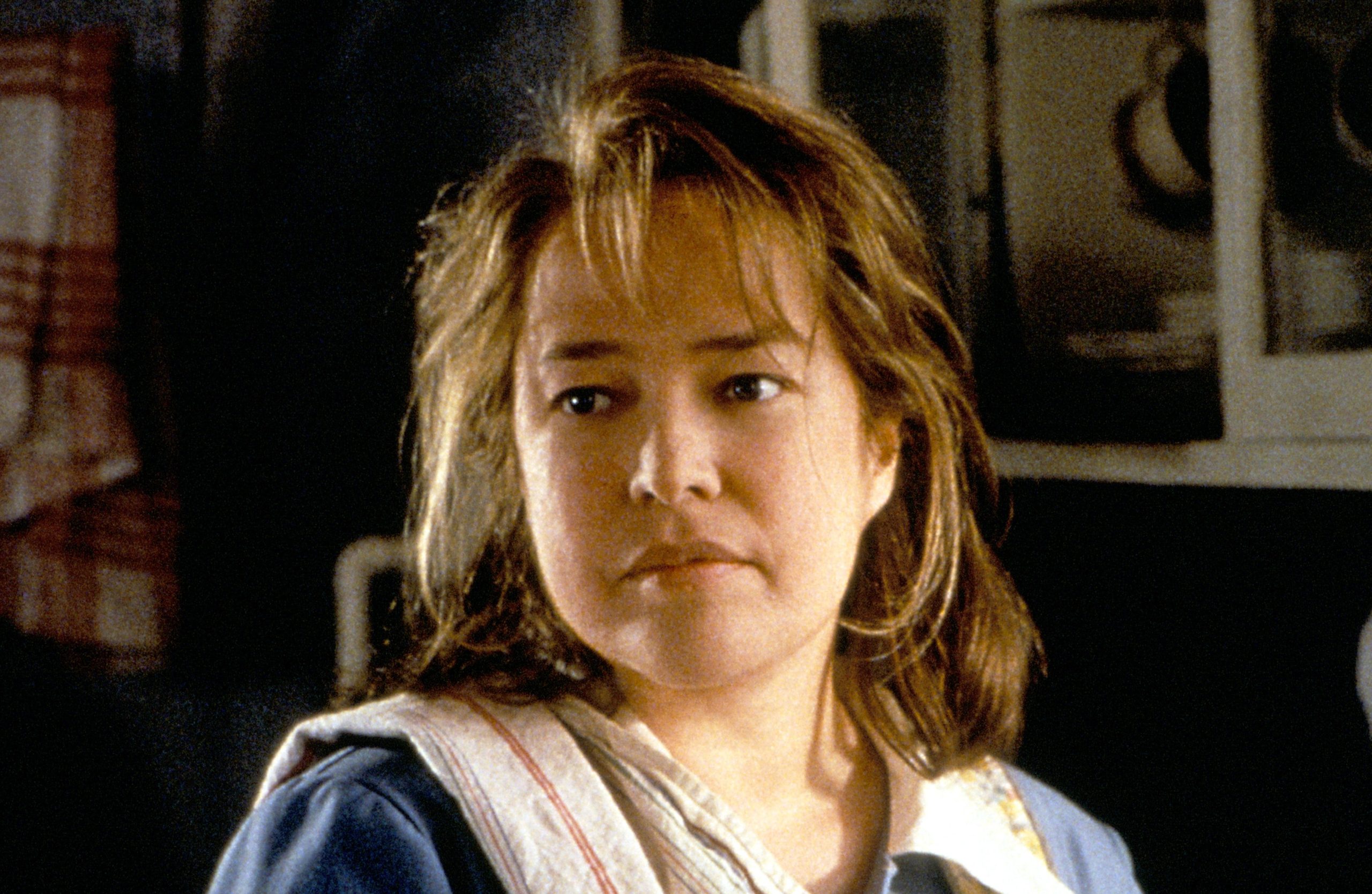
Fabulous article. Very well written.